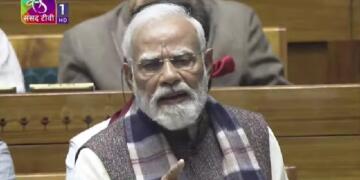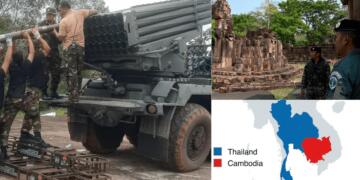The date is 14th January, 2024. IndiGo flight 6E-2175 is scheduled to fly from Delhi to Goa. However, due to dense fog in the National Capital, the flight has been delayed by 13 hours. The Co-Pilot announces on the Flight Announcement System, “Dear Passengers, this is your Co-Captain Anup Kumar speaking. We are still witnessing dense fog conditions. Do not worry we will be taking off as soon as we get clearance to fly.” This was supposed to be a routine announcement, like the many before, to update the passengers on the weather condition. Or so the crew thought.
Sahil Kataria, a 28-year-old Passenger in the last seat chews his lips in frustration. He has been on this giant metallic tube for more than 10 hours now and the flight is still not moving. His cheeks go crimson red. His nostrils flare, he stands up and runs like a madman. Before anyone could register what had happened. He had punched IndiGo Co-Pilot Anup Kumar. He was tackled by passengers and taken into custody immediately.
The IndiGo flight, scheduled for 7.40 am on January 14, eventually took off at 6.30 pm but the temporary madness that took over Kataria had made him a felon with the entire plane as the witness.
There is a comprehensive procedure for airlines to follow when dealing with unruly passenger behavior. Unruly behavior encompasses a range of actions, including but not limited to consuming liquor or drugs resulting in disruptive behavior, smoking, disobedience to pilot instructions, using threatening or abusive language, and physically threatening or abusive behavior. In this particular case, as the incident occurred on the ground, the unruly passenger was immediately handed over to airport security.
The Directorate General of Civil Aviation (DGCA) undoubtedly has the prerogative to treat Kataria as they see fit, in accordance with the prevailing aviation regulations. Additionally, Kataria’s actions, particularly the physical assault on the flight crew, may attract legal consequences under the Indian Penal Code (IPC). Possible applicable sections include Section 323 (Punishment for voluntarily causing hurt) and Section 353 (Assault or criminal force to deter public servant from discharge of his duty).
While in no way condoning Kataria’s behavior, it is essential to consider the broader context. Imagine being a passenger like Kataria, confined within an aircraft for over 10 hours without any movement. The frustration and helplessness in such a situation can be overwhelming. Flight delays, especially those extending for several hours, can lead to increased anxiety and stress. This incident serves as a reminder of the psychological strain passengers may experience during such prolonged delays.
This perspective does not justify Kataria’s actions but prompts a reflection on the conditions that can push a person to the brink. It raises questions about the support and communication strategies employed by airlines during extended delays. Ensuring passenger comfort, providing timely updates, and managing expectations during such situations are crucial. Additionally, the IndiGo incident highlights the need for airlines to have robust protocols to de-escalate situations and handle unruly passengers effectively while maintaining the safety and security of everyone on board.
And yes, we are blaming the system.
The dense fog that enveloped Delhi on January 14th affected over 100 flights causing massive delays, underscoring a larger trend of weather-related disruptions. Delhi airport is the second busiest airport in the world by seating capacity. It is also the busiest airport in Asia by passenger traffic. Converting Delhi runways into an all-weather facility have been in news for long but nothing concrete has happened.
Waiting for incidents like the IndiGo assault before taking action is unsustainable. With India’s air travel demand soaring due to economic growth and a burgeoning middle class, a paradigm shift is imperative.
To realize its ambition of becoming the third-largest economy, India must prioritize the modernization and standardization of aviation infrastructure. Outdated navigation systems struggle to cope with the demands of a modern fleet navigating through increasingly turbulent skies. Regardless of the cost, investing in cutting-edge technology must be elevated to a national priority.
Also Read: Indian airports are making global headlines, and for good reasons
While India boasts numerous world-class airports, their architectural prowess is compromised if its navigation systems lag behind. Parity between airport infrastructure and operational technology is crucial to ensuring seamless air travel, irrespective of weather conditions.
The aviation sector is integral to a globalized economy, connecting people, businesses, and cultures. India’s journey toward global leadership hinges on its ability to navigate economic and literal storms alike. The time for piecemeal solutions and reactionary measures is over. India must adopt a comprehensive, future-proof vision, ensuring safe, efficient, and weather-resilient air travel.
This is not merely about preventing air rage incidents; it’s about constructing an aviation ecosystem that mirrors India’s aspirations and potential. Through proactive infrastructure upgrades, cutting-edge technology, and a commitment to operational excellence, India can soar through even the densest fog, emerging as a symbol of progress in the global aviation landscape.
The recent IndiGo incident is not just an isolated event; it’s a symptom of a deeper malaise within India’s aviation infrastructure. The recurrent disruptions due to weather conditions, as seen in the Delhi fog episode, should serve as a wake-up call. The reactive measures announced by aviation authorities, while commendable, seem more like band-aids than long-term solutions.
India’s economic trajectory demands a radical rethinking of its aviation strategy. The ambitious goal of becoming the third-largest economy requires more than just cosmetic changes. It necessitates a complete overhaul of outdated navigation systems, irrespective of the financial implications. The cost of investing in cutting-edge technology is a small price to pay for the safety and efficiency of air travel
While India takes pride in its gleaming airports, they are reduced to mere showpieces if their operational technology cannot match their architectural grandeur. The nation must prioritize achieving a harmonious balance between state-of-the-art airport infrastructure and advanced operational systems. This is not a luxury but a necessity for ensuring a seamless and resilient air travel experience for its citizens.
To some it all up, India stands at a crossroads in its aviation journey. The recent assault incident is an opportunity for the nation to reevaluate its priorities, invest in cutting-edge technology, and set a new standard for operational excellence. Let this incident propel India towards a future where its skies are not just limitless but also synonymous with efficiency, safety, and global leadership in aviation.
So yes Mr Kataria is guilty, but…
Also Watch:































